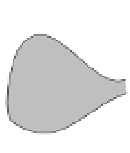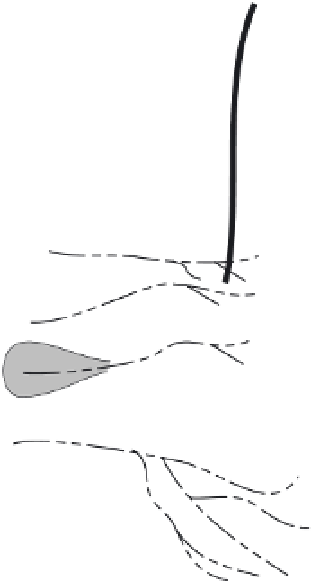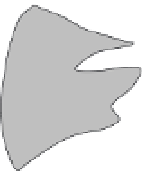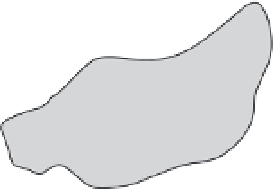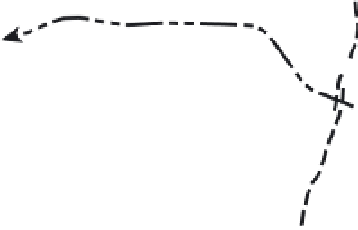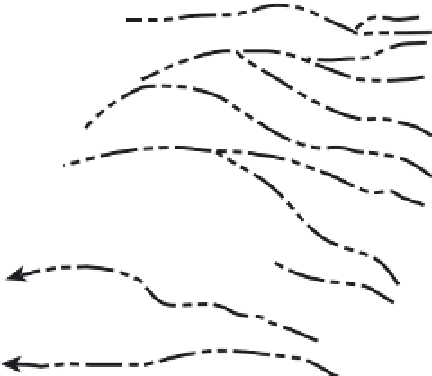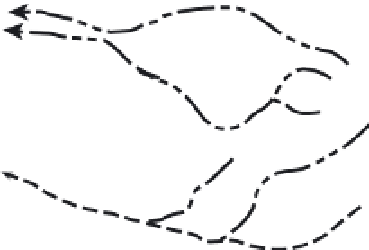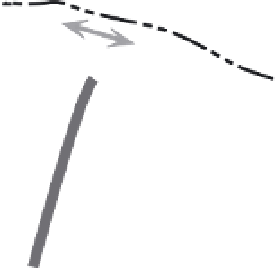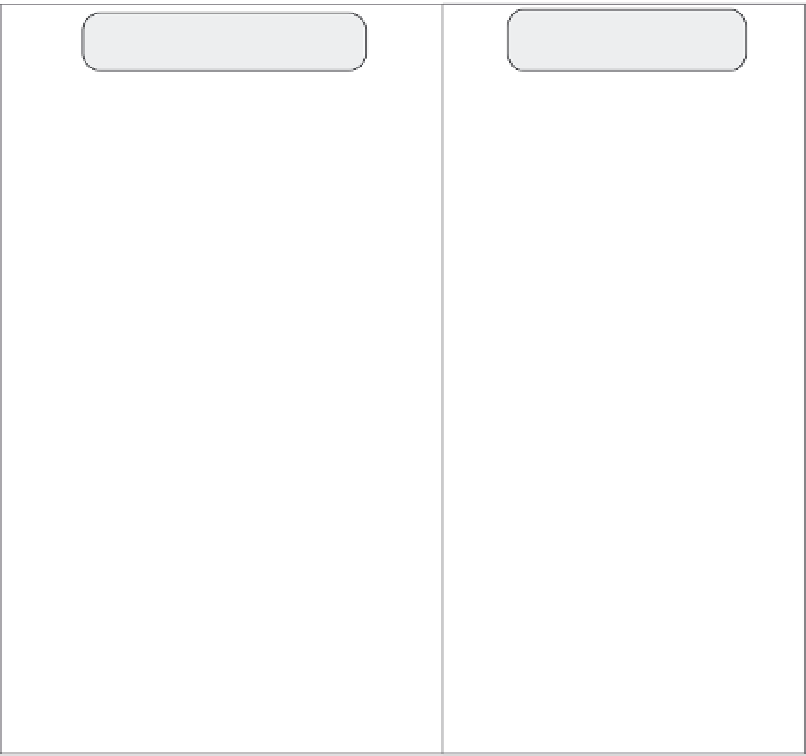Geology Reference
In-Depth Information
Geomorphology of
Overlapping Faults
Overlapping Tobin and
Pearce Faults
zone of
fault
overlap
old
fault
alluvial
fans
fanhead
entrenchment
abandoned
fans
drainage
basins
oblique
A
B
catchment
Fig. 10.12
Large-scale geomorphology where a young fault tip propagates past an older normal fault.
A. Interpretation of the overlap zone of active normal faults in Pleasant Valley, Nevada, where the Pearce Fault is
propagating northward past the tip of the Tobin Fault. B. Cartoon of major geomorphic features in such zones of
overlap. Note diminishing footwall topography toward the propagating fault tip, incorporation into the young footwall
of oblique catchment marking the end of the old fault, and entrenchment of the fans that sat in the hanging wall of
the older fault and are in the footwall of the new fault. Modified after Leeder and Jackson (1993).
can link up to form a continuous displacement
surface, their tips can propagate past each other,
or they might encounter barriers that inhibit
their propagation (Fig. 4.10).
These options raise the issue of how one
determines whether a given normal fault resulted
from a linking up of several faults or from the
growth of a single rupture. One starting point
is to delineate competing models for the fault
evolution, footwall topography, and basin
subsidence (Fig. 10.13). In the case of a single
fault that simply increases its length and
displacement through time, the “bow-and-arrow”
rule should apply, such that a systematic decrease
in displacement occurs toward the fault tips (Fig.
10.13A). In the case where a fault consists of
segments that have linked together, the footwall
topography should show displacement “deficits”
near the segment boundaries, such that there are
topographic saddles and basement highs at the
segment boundaries (Fig. 10.13B). This geometry
would be consistent with the contention (Schwartz
and Coppersmith, 1984) that the segments
rupture with characteristic earthquakes, such that
strain should accumulate in a predictable fashion,
with more strain in mid-segment and less at
the segment boundaries. In the case where seg-
mented faults link together and then compensate
for the displacement deficits at the segment
boundaries (Fig. 4.12), the geometry could be












